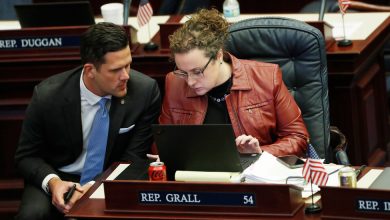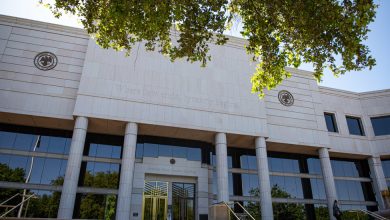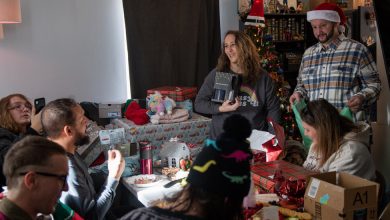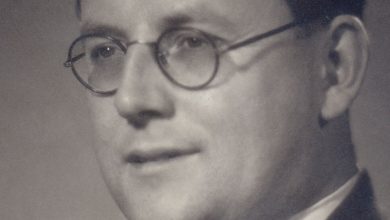Back to High School,

Back to High School,
After Missing So Much




After a year of remote education in Waterbury, Conn., students and staff members are returning with joy and anxiety. Clockwise from top left: Jaikwon Francis, Dania Gray, Ashley Moutinho, Markela Karameta.Credit…Christopher Capozziello for The New York Times
Students missed homecoming, field trips and classes, while also handling anxiety and economic precarity. Now, they must leap into the future, with the school’s help.

By Dana Goldstein
Sept. 28, 2021
WATERBURY, Conn. — This fall, there is a surreal swirl of newness and oldness in the hallways of John F. Kennedy High School: Black Lives Matter face masks and exhortations to pull them up — “Over your nose, please!” — but also ribbing and laughter, bells ringing, hall passes being checked and loudspeaker reminders about the dress code (collared black or navy shirts and khaki or black bottoms).
Kennedy was open for in-person learning most of last school year. But families in this working-class, majority Hispanic and Black school district in Waterbury, Conn., opted out in large numbers, with two-thirds of high school students ending last year fully online.
This year, only students with severe health concerns can qualify for remote learning, and so far, no Kennedy families have been approved.
That means most juniors and seniors have returned to the building for the first time in 18 months. They are taller and more mature — sometimes physically unrecognizable, a counselor noted — but often reeling from what the coronavirus pandemic has wrought: anxiety, economic precarity and academic struggle.
The school is teeming with over 1,300 students, more than before the pandemic, because of the closure of a nearby Catholic school and an influx of families moving from New York City in search of affordable housing.
A majority of students are making up missing credits from failed courses, according to the principal, Robert Johnston. Some are scared to enter the crowded cafeteria, so they are allowed to eat and socialize in quiet classrooms. There have been a few fights, and it is clear some teenagers are struggling to regulate their behavior after so much time at home, often isolated from peers.
Before the pandemic, Kennedy was on a trajectory of improvement: The graduation rate went up from 73 percent in 2011 to 84 percent in 2019. Now, that progress is at risk, with many upperclassmen behind on college or career planning. Some feel that after 18 months of learning via computer screen, they do not know teachers well enough to ask for recommendation letters. Many hope to become the first in their families to graduate from a four-year college.
“It is a completely wild experience,” Mr. Johnston said as he stood in a hallway intersection directing students to classrooms — many had forgotten how to navigate the building. “I’m still a little nervous. At the same time, it’s exhilarating.”
Here are the voices of Kennedy High School. Interviews have been edited.
Markela Karameta, 16, Senior
 Credit…Christopher Capozziello for The New York Times
Credit…Christopher Capozziello for The New York Times“I’ve never been to a homecoming.”
Markela Karameta
Last year was the worst year of my life. It just caused, like, a really dark moment.
Seeing my friends had been the best part of my day. Going to school, hanging, doing whatever.
It was so draining being on social media; staring at the phone screen all day. There was a lot of drama going on in the beginning. The quarantine made you lose a lot of friends.
And we never got a pep rally. I’ve never been to a homecoming. I’ve never been on a field trip. Are we going to be able to have Senior Day?
Lennox Serrano, 16, Junior
 Credit…Christopher Capozziello for The New York Times
Credit…Christopher Capozziello for The New York Times“You don’t want to go near people.”
Lennox Serrano
My freshman year, I knew the school like the back of my hand. But when I came back for junior year this fall, I didn’t know where anything was. I felt like it was my first time being there.
I used to give people hugs; give high-fives. Now it’s a fist bump or waving hi. You don’t want to touch people like that anymore. You don’t want to go near people. It doesn’t really feel “me,” because I like to socialize, be in a conversation, be close, be one-on-one. Just to be in a group of people now and have fun? It’s kind of hard. You never know if there is Covid around. It’s scary.
Robert Johnston, Principal
 Credit…Christopher Capozziello for The New York Times
Credit…Christopher Capozziello for The New York Times“There is some social media drama.”
Robert Johnston
It is a completely wild experience navigating not only the opening of school — which is always kind of hectic — but opening school in the middle of a pandemic after not having that school be fully open for a year and a half.
Students have not been together, and how they are handling interpersonal conflict isn’t the best. There is some social media drama. It can quickly escalate. We had an established culture in the building before the pandemic. Now we need to reestablish that ecosystem.
It is surprising just how isolated many students were throughout the pandemic. There are more students who are having anxiety.
We have a number of students who really do not want to go into the cafeteria. The sheer number of students is really causing a lot of anxiety.
Math is the biggest academic challenge, and that was true even before the pandemic. We’re providing tutoring and credit recovery, which stimulus dollars are helping pay for.
But what a lot of people don’t think about is the loss of time in terms of college or career planning. Normally when we have students in person, we start this early, in ninth grade, talking about what steps you can take even at 14. While we attempted to do a lot of that stuff while we were virtual, we weren’t as successful. Now we have juniors under the gun playing catch-up with their college planning.
Normally it’s rather easy for a student to ask for a college recommendation letter. But how well do staff members actually know students who haven’t been in person for the last year and a half?
Dania Gray, 17, Junior
 Credit…Christopher Capozziello for The New York Times
Credit…Christopher Capozziello for The New York Times“I didn’t want to be at home.”
Dania Gray
At the beginning of the pandemic, I moved to Waterbury with my mom and younger sister. I grew up in the Bronx. But my mom wanted to get a house. This was the best place, the best neighborhood.
I tried going to school in person for a few weeks sophomore year, but we had to stay home every few days because one person would catch a case and then the whole school would shut down. Also, staying home was easier on my mom and sister. My mom was working in person as a social worker in New York City.
In the morning, I’d make sure my sister was awake and got on the bus for kindergarten. Then I’d wait for her to come home and help her with her homework. I’d make sure she showered — give her food to eat.
I didn’t want to be at home. And when I realized I wouldn’t have school sophomore year, it really took a toll on the mind.
I did well in my online classes. But I’d sleep into the afternoon and then do schoolwork for the rest of the day. Then I’d watch TV and videos all night into the morning. It was a repeating pattern. There was just so much free time.
Now that I’m back in school, I’ve met a lot of new people. Everyone seems a lot friendlier and more open. I’m playing volleyball. And I want to get involved in the community, maybe volunteer with the Red Cross.
I want to go to college and get a doctorate in psychology. I always find myself questioning, “What makes people think and act the way they do? And how can I, as a person, relate to them?” The pandemic made me more self-aware.
Ashley Moutinho, Counselor
 Credit…Christopher Capozziello for The New York Times
Credit…Christopher Capozziello for The New York Times“A lot of my juniors don’t have solid plans yet for after graduation.”
Ashley Moutinho
I always joke around that freshmen don’t really become freshmen until about halfway through the year. Through Christmas, they’re pretty much still eighth graders.
Now I’m seeing them out there in the hallways, and they look like they could be 22.
Last year, some students were working at supermarkets, pharmacies, restaurants. McDonald’s and Dunkin’ Donuts hire a lot of our kids. Students were contributing financially more than they had ever contributed prior.
The timing of working was easier when they were virtual. Now that school gets out at 1:50, they have to take the bus home and they have to change into their work uniform. You have to remind them, essentially, that school is their priority. It’s time management. I have a part-time job myself working at the Gap, so I can talk with them about that.
Jaikwon Francis, 16, Junior
 Credit…Christopher Capozziello for The New York Times
Credit…Christopher Capozziello for The New York Times“The pandemic opened my mind.”
Jaikwon Francis
In April 2020, my grandmother in Brooklyn died of Covid. We were close — I lived with her for a while. It was hard to move on from at first.
I didn’t go into school last year. Daily life was different. I slept late and missed 80 days of geometry, which was first period. I failed that class and did credit recovery over the summer. It was an online program that took two hours per day for two weeks.
Now, I try my best to be optimistic. Covid is not going to last forever.
And really, the pandemic opened my mind. I’ve been complimented a lot on my writing, and last year, I took journalism class online. I started to interview people. And I also got into photography. When you’re trapped inside, it makes you want to go out more. I started going on walks past my neighborhood to this area with woods. It was so peaceful, and I got this urge to snap away. Now, anywhere I go, I can picture a picture.
My journalism teacher tells me I’m really good at it. My mom and stepdad encourage me a lot. They say I have to go to college. Now I’m taking journalism again and will work on the school paper.
Donald Lafayette, Chemistry Teacher
 Credit…Christopher Capozziello for The New York Times
Credit…Christopher Capozziello for The New York Times“The experience of remote learning will help them in college online courses.”
Donald Lafayette
Last year, I was teaching in the classroom and, at the same time, on video with the kids at home. Only a few students were in-person, so the focus was really on remote. During first period, people would be in bed. The hardest part was, when you tell stories in the classroom, you can see if they’re engaged.
But the experience of remote learning will help them in college online courses. A lot of jobs are now remote, too. Things are changing.
Jessinya Severino, 17, Senior
 Credit…Christopher Capozziello for The New York Times
Credit…Christopher Capozziello for The New York Times“I feel better now that we’re back in person.”
Jessinya Severino
Last year I would get migraines probably three times per week from being on the computer screen so much.
I feel better now that we’re back in person.
Now I have to finish my college applications, but I feel like I didn’t get a chance to really think about it or, like, breathe with it. I’m overwhelmed.
I’m hoping for either UConn or Quinnipiac. But Quinnipiac is very expensive. I’m trying to find whatever is cheapest. My talented and gifted teacher makes sure we are on top of our college forms. My mom didn’t go to college, and since she’s never gone through it, it’s really hard for her to try and help me. I want to be a perfusionist. A perfusionist is someone who controls a cardiac bypass machine during surgery. The joke is that nobody says that word except for me. I learned about it on “Grey’s Anatomy” and researched it.





